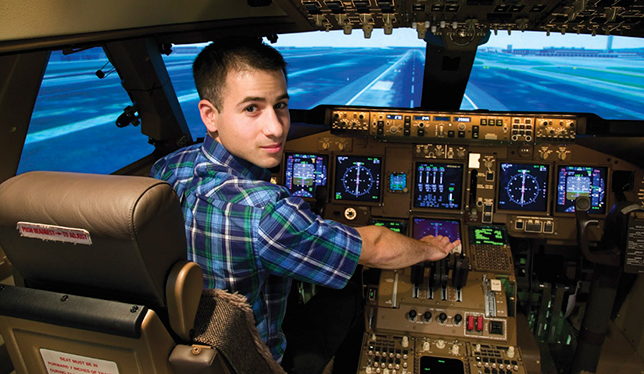Innovation fuels the aerospace industry. Approximately 20 percent of all Canadian aerospace activities are dedicated to research and development, five times more than in the manufacturing industry. And 70 percent of this R&D is carried out in Quebec, notably in greater Montreal. It therefore comes as no surprise that Bombardier shares its home province with the Consortium for Research and Innovation in Aerospace in Québec (CRIAQ), an organization that literally helped aerospace research take off, not only in Quebec but across Canada.
“CRIAQ is the reason aerospace research has progressed so quickly in recent years,” says Fassi Kafyeke, senior director of strategic technology and advanced product development at Bombardier Aerospace.
The numbers speak for themselves. Established in 2002, CRIAQ has 128 completed or ongoing projects, for a total value of $127 million. The topics are as varied as they are essential for the advancement of the industry, from studying composite materials to reducing noise pollution, creating new control systems, reducing the environmental footprint of air travel, fighting pilot fatigue, improving the flight experience, and more.
Building a collaborative community
“CRIAQ’s stroke of genius was inspiring everyone in the aerospace community to work together,” says Denis Faubert, the consortium’s president and CEO. There are at least two businesses and two research institutions – and often more – developing each project, he says. The Consortium now brings together 21 universities and research centres and 57 businesses, including the key players Bombardier Aerospace, CAE, Bell Helicopter and Pratt & Whitney.
This ecosystem helps the industry to perform better, says Bombardier’s Mr. Kafyeke. “The big aerospace nations, like the United States and France, have much more money to spend on R&D than we do,” he says. “Collaborative research is the only way we can respectably compete on our budget. By pooling our financial resources, we get more for our money.” CRIAQ estimates that businesses see a one-dollar return on every 25 cents invested.
Universities, colleges and research centres also benefit from factors like additional funding sources and privileged access to industry needs. However, CRIAQ is also having an unexpected ripple effect. “Collaborative research with CRIAQ led us to create Quebec’s very first aerospace engineering program,” says Christophe Guy, CEO of Polytechnique Montréal. The engineering school also received the NSERC Multisectorial Industrial Research Chair in Coatings and Surface Engineering, Canada’s second-largest industrial research chair.
Training the next generation
The consortium also helps to train up-and-coming scientists. In the last 14 years, more than 900 young researchers have come through the ranks. “It’s an exceptional opportunity for us to familiarize ourselves with the industry and its standards,” says Julien Guay, a master’s student in aerospace engineering at Polytechnique Montréal who is taking part in a CRIAQ project on computational fluid dynamics. Businesses keep close tabs on the work of future engineers, with an eye to recruitment.

“Unlike other research consortiums, we don’t put out calls for research proposals. We prefer open innovation,” explains CRIAQ’s Mr. Faubert. In practical terms, this translates into a big biennial research forum. In April, the eighth research forum brought together more than 700 aerospace research and industry stakeholders. During the event, industry players were given three minutes to present the issues that concerned them. Industry researchers and experts then approached them to find solutions together. Since the research they are talking about is at the pre-competitive stage, nobody worries about leaking industry secrets.
The research forum’s success extends beyond Canadian borders. Representatives from nine countries participated in the recent forum, including Laurent Manach, CEO of the Pôle de compétitivité EMC2 in Nantes, France. “The CRIAQ model is similar to the competitiveness clusters like ours in France,” he remarks. “While our events may attract 200 people at a time, CRIAQ has a single event with 700 people. It’s a hallmark event in Canada and worldwide, which is extremely attractive.”
CRIAQ is so widely admired that, in 2014, the Canadian government used it as an inspiration for creating its federal counterpart, the Consortium for Aerospace Research and Innovation in Canada. It is headquartered in Montreal and uses the same CRIAQ team. Why mess with success?
CARIC has been a failure since day one – cannot replicate overnight the kinds of symbiotic relationships in PQ in the ROC – program needs to be handled by program people and run transparently and fairly – these will be difficult to obtain and maintain.